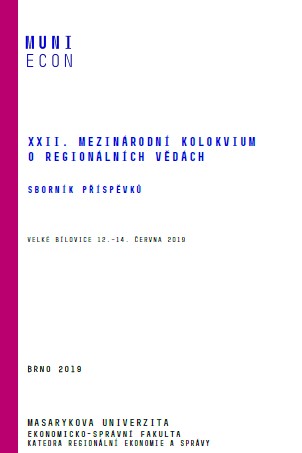HOW DID THE TIME GO WITH THE EU REGIONAL COMPETITIVENESS INDEX? ANALYSIS OF CONTENT AND METHODOLOGICAL CHANGES ACROSS EDITIONS
HOW DID THE TIME GO WITH THE EU REGIONAL COMPETITIVENESS INDEX? ANALYSIS OF CONTENT AND METHODOLOGICAL CHANGES ACROSS EDITIONS
Author(s): Michaela Staníčková, Lukáš Melecký
Subject(s): Regional Geography, Methodology and research technology, Economic development, EU-Approach / EU-Accession / EU-Development
Published by: Masarykova univerzita nakladatelství
Keywords: composite index; edition; EU Regional Competitiveness Index; methodology; NUTS 2 region;
Summary/Abstract: Why measuring regional competitiveness is so important? Because if you cannot measure it, you cannot improve it. A quantitative score of competitiveness will facilitate the European Union (EU) in identifying possible regional weaknesses together with factors mainly driving these weaknesses. This, in turn, will assist regions in the catching up the process. In doing so, the paper looks at the impact of a variety of competitiveness factors, taking into account regional differences which will affect their relative importance. In this case, the Regional Competitiveness Index (RCI) can be used to help regions assess which aspects of competitiveness are the strongest and which ones need improvement. RCI provides the first synthetic picture of the EU competitiveness at the level of NUTS 2 regions representing, at the same time, a well-balanced plurality of different fundamental aspects. It takes into account both social and economic aspects, including the factors which describe the short and long-term potential of the economy. It is very important to understand the extent to which regions compete with each other, where this competition comes from, and what factors determine a territorial, economic attractiveness. Therefore, regional development strategies could use RCI to identify possible regional development priorities. By systematic analysis of scientific literature comprehensive analysis of the EU regional competitiveness is performed.
Book: XXII. Mezinárodní kolokvium o regionálních vědách: Sborník příspěvků
- Page Range: 37-45
- Page Count: 9
- Publication Year: 2019
- Language: English
- Content File-PDF

